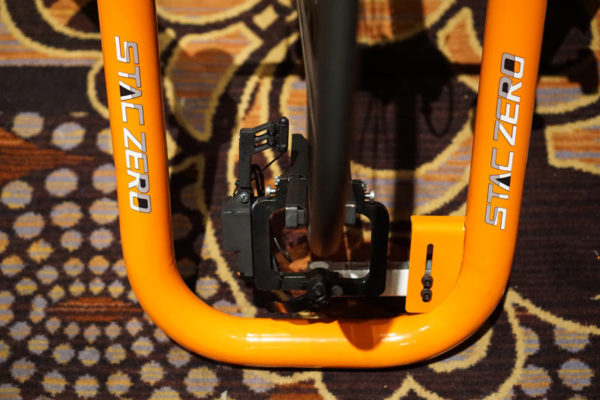The STAC Zero indoor cycling trainer brings three very unique features to market. The most eye catching is the resistance mechanism, which doesn’t touch your wheel. Or your tire. Or require wheel removal, as on direct-drive trainers. Instead, it uses two banks of magnets to create resistance on your alloy rims. That means no moving parts, and no noise…which is the second innovation. It’s totally quiet. The only noise you’ll hear is your drivetrain. The third innovation? It packs down really, really flat…
The resistance unit slides up and down to adjust for wheel size, and you can angle the magnet banks in or out to adjust for rim width. It’ll fit around road, cyclocross and even mountain bike tires.
A speed sensor is integrated into the design, and the lower body of the resistance unit is a strain gauge. Combined, they calculate your power output and transmit that figure via ANT+ and BLE to your cycling computer.
When you’re done, it folds completely flat, low enough to fit under many couches. It’s also fairly light since there’s no flywheel or fluid unit. They include a 2lb weight that clips into your rear wheel (if you want) to give it a little more momentum so it “coasts” more naturally between pedal strokes. Technically, it does contact your bike at the axle, but that’s it. There’s no tire wear or moving parts to wear out.
Retail is $399 for the standard unit, $499 with power measurement.



